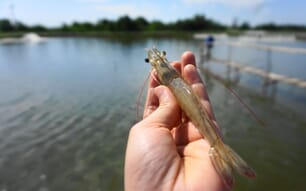The use of vacuum/pressure pumping when fish are moved to sea cages or a well boat for harvesting is common practice. The pumps comprise of a tube with a tank in the middle. The tank changes between negative pressure (vacuum) and positive pressure in order to alternate between sucking the fish from the sea cage and pushing it from the tank over to, for instance, a well boat.
Blood in the pumping water
During vacuum pumping of salmon in the industry, blood has on occasions been observed in the pumping water. The blood generally originates from the gills or other wounds on the fish.
Nofima, in collaboration with the Institute of Marine Research, has researched whether this may be attributed solely to the vacuum in the pumping process. In order to study whether vacuum alone may be a possible explanation of the blood in the pumping water, a study was carried out in February 2010 involving anaesthetised and non-anaesthetised Atlantic salmon.
No injuries detected
In the trial we saw no sign of blood in the anaesthetic tank after the vacuum treatment. Further, no injuries were observed in the organs, muscle or inside the belly, says Scientist and Project Manager sa Espmark.
We think the blood which from time to time is detected in the pumping water comes from injuries that the salmon sustain from bumping into each other. This may also come from knocks inside the pump unit.
Espmark says that the measurement of physiological stress pointed to salmon suffering from little stress. However, salmon that were exposed to medium and high vacuum challenge released more air (belched) than salmon exposed to low vacuum. The control fish did not release air. However, it is worth noting that all vacuum pumped salmon release some air - even at low pressure.
The salmon in the trial with the medium and high vacuum challenge also swam even more than the other fish, resulting in an increased respiratory rate. The degree of air release and the time the salmon spent swimming increased in line with the vacuum challenge, but the respiratory rate was high in all vacuum pumped salmon.
The project is financed by the Fishery and Aquaculture Industry Research Fund (FHF).




